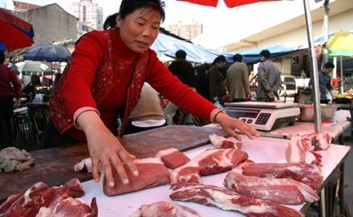In a recent conference on global health, Craig Mosman from Idaho spoke on food insecurity. There are several current issues which impact food insecurity: weather, political instability, crop loss, and disease.
One disease has been identified by the Food and Agriculture Organization (FAO) as a “serious threat to food security”: African Swine Fever (ASF). ASF was first identified in Kenya in the 1920’s and is endemic in Africa. It causes up to 100% mortality through acute hemorrhagic fever. There is no effective treatment or vaccine. ASF has been called “pig Ebola” because of its alarming lethality, and the greatest animal health crisis in history because of the global spread of the disease and the number of animals killed.
The Spread of ASF Worldwide
In 1960 ASF was first reported in Spain. It remained endemic there for decades. In 1978 it was identified in Sardinia, and remained endemic there until 2021, when an eradication program among wild boars led the government to declare the region disease free. By 2005, the disease had spread well beyond Africa into 32 countries. By 2007 ASF was identified in Georgia (Caucasus region). From there, it is believed the disease spread through Russia, Armenia, and Belarus.
The virus is very hardy. It can survive in soil or water. It can survive in frozen or cooked meat for months. Studies has shown it survives in feed for more than 3 months. It is easy to deduce that with rapid international travel, transboundary trade in animals and meat, and the natural vectors of ticks, mosquitoes and wild boars, the spread of the disease accelerated. In August 2018 ASF was first reported in China. In 2018-20219, an estimated 300 million to 350 million pigs in China were either killed or culled because of ASF, which amounted to roughly 25% of all hogs existing on earth. It caused an estimated US $89.5 – 196.2 billion in total economic loss to that country alone.
Snipers at the DMZ and Jumping Oceans
According to Craig Mosman, by the end of 2020, ASF had jumped borders into Vietnam, the Philippines, Laos, and Cambodia. In South Korea the government was so concerned about introduction of ASF from North Korea that they hired snipers to shoot wild boars in the DMZ between North and South Korea. The drastic measure was necessary because South Korea had no defense if the disease entered the country. And yet, it still infected herds in South Korea by 2020.
Foreshadowing that an ocean is no longer a barrier to the transmission of the virus, ASF was reported in New Guinea and Timor-Leste in 2019-2020, and in the Dominican Republic and Haiti in 2021.
ASF in the US
Craig Mosman said that if the history of the spread of ASF teaches anything, it shows that the virus will eventually come to the US. It may be brought in inadvertently in packaged meat, on soil from shoes of someone who has visited one of the 32 countries now harboring the disease, or through any of the natural vectors of ticks, wild boars, or mosquitoes. Finally, given the devastating economic impact the disease would cause, it has to be considered that some person might intentionally introduce the virus in an effort to inflict economic harm to the US. An Iowa State University study estimated that the loss to the US would be over $50 billion the first year the virus came to the US.
How the Spread of ASF Contributes to Global Food Insecurity
Pork is the leading meat consumed in the world, with approximately 125 million metric tons consumed annually. It is conservatively estimated that in 2019-2020, as a result of ASF, pork production decreased by 33%. That triggered increased prices for pork and also a rise in prices for substitute proteins. The poor suffer the most, caught between scarce supply and rising prices.

With ASF having circled the globe, it is difficult to know where to turn to import meat to make up the difference. China attempted to alleviate rising prices by releasing tons of frozen pork from a huge national reserve, similar to the oil and gas reserves kept by the US in the event of severe gasoline shortage. But dipping into the reserve is a short term solution to a long term problem. Experts estimate that it will take a decade for China’s pig herd to return to pre-ASF levels.
It becomes a vicious circle: ASF causes the loss of millions of tons of pork. Pork prices rise dramatically. Exporting pork from countries with an ASF outbreak is restricted in an attempt to stop the spread of the virus. Countries attempt to substitute for the loss of pork with importing food. Prices for fuel have spiked to historic levels, which make imported food more expensive.
A change in diet away from a reliance on pork is certainly one response to a drastic reduction in pork supply. But Craig Mosman of Idaho noted weather, famine, and the war in Ukraine have either reduced harvests or increased prices. A report by the Economist estimated that 25 million tons of grain are trapped in Ukraine, and 6-8 million tons of corn, enough to feed the 8 poorest countries on earth for a year.
What Can be Done to Stop ASF? The Answer is in a Novel Approach?
What is the definition of insanity? We can’t continue the same approach in trying to stop this disease and expect a different result. Craig Mosman is Vice President for business development at Seek Labs. He said that Seek Labs is pioneering a new approach that has proven in vitro to stop the replication of the virus. Live animal trials will commence soon.










